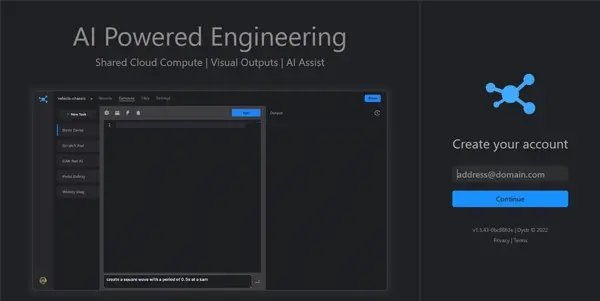Dystr

No-code help for engineers working on the cloud. Supports Amazon's AWS, Google Cloud or Microsoft Azure
Dystr: Streamlining Cloud Operations with No-Code Automation
Dystr is a groundbreaking no-code/low-code platform designed to empower engineers working with cloud infrastructure. It simplifies complex cloud tasks across major providers – Amazon Web Services (AWS), Google Cloud Platform (GCP), and Microsoft Azure – eliminating the need for extensive coding and accelerating deployment. This article delves into Dystr's capabilities, benefits, applications, and competitive landscape.
What Dystr Does
Dystr acts as a bridge between engineers and cloud infrastructure, enabling them to automate repetitive and complex tasks without writing lengthy scripts. It leverages a visual, drag-and-drop interface to create workflows, enabling the orchestration of cloud resources and processes. This significantly reduces development time and lowers the barrier to entry for cloud automation, even for engineers with limited coding expertise. Dystr essentially translates visual workflows into executable code, handling the underlying complexities of cloud APIs.
Main Features and Benefits
Visual Workflow Builder: Dystr's core strength lies in its intuitive visual interface. Engineers can create complex automation workflows by simply dragging and dropping pre-built modules representing various cloud actions.
Cross-Cloud Compatibility: Unlike many tools focused solely on a single cloud provider, Dystr supports AWS, GCP, and Azure, providing flexibility and vendor independence.
Pre-built Modules and Templates: Dystr offers a library of pre-built modules for common cloud tasks, such as deploying applications, managing databases, scaling resources, and monitoring performance. These readily available components accelerate development.
Integration with Existing Tools: Dystr seamlessly integrates with other popular DevOps tools, streamlining your existing workflows and enhancing collaboration.
Enhanced Security: Dystr incorporates robust security measures to protect cloud resources and sensitive data throughout the automation process.
Improved Efficiency and Scalability: Automating cloud operations through Dystr leads to improved efficiency, reduced operational costs, and increased scalability. Manual tasks are replaced with automated workflows, freeing engineers to focus on more strategic initiatives.
Use Cases and Applications
Dystr finds applications across various scenarios within cloud engineering:
Infrastructure as Code (IaC): Easily define, provision, and manage cloud infrastructure without writing complex Terraform or CloudFormation scripts.
Application Deployment: Automate the deployment of applications across different cloud environments with consistent and repeatable processes.
Database Management: Simplify database provisioning, scaling, and backups across various cloud databases.
Security Automation: Implement automated security measures such as vulnerability scanning, patching, and access control.
Monitoring and Alerting: Automate the monitoring of cloud resources and set up alerts for critical events.
Disaster Recovery: Build automated disaster recovery plans to ensure business continuity in case of outages.
Comparison to Similar Tools
Dystr distinguishes itself from competitors like AWS Step Functions, Google Cloud Workflows, and Azure Logic Apps by providing a truly no-code interface with cross-cloud support. While these platforms offer automation capabilities, they often require coding expertise or are limited to a specific cloud provider. Dystr lowers the barrier to entry for cloud automation, making it accessible to a wider range of engineers.
Pricing Information
Dystr operates on a freemium model. A free plan offers limited functionality, sufficient for basic automation tasks and experimentation. Paid plans, with tiered pricing based on usage and features, unlock advanced capabilities and increased resource limits. Specific pricing details are available on the Dystr website.
Conclusion
Dystr offers a powerful and accessible solution for engineers seeking to streamline their cloud operations. Its no-code approach, cross-cloud compatibility, and comprehensive feature set make it an invaluable tool for teams of all sizes looking to improve efficiency, reduce costs, and enhance their cloud infrastructure management. By abstracting away the complexities of cloud APIs, Dystr empowers engineers to focus on innovation rather than repetitive manual tasks.